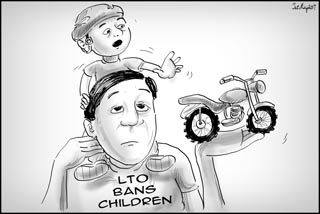
[av_one_full first min_height=” vertical_alignment=” space=” custom_margin=” margin=’0px’ padding=’0px’ border=” border_color=” radius=’0px’ background_color=” src=” background_position=’top left’ background_repeat=’no-repeat’ animation=”]
[av_heading heading=’ EDITORIAL | Another option for Mindanao’ tag=’h3′ style=’blockquote modern-quote’ size=” subheading_active=’subheading_below’ subheading_size=’15’ padding=’10’ color=” custom_font=”][/av_heading]
[av_textblock size=” font_color=” color=”]
Friday, May 26, 2017
[/av_textblock]
[av_textblock size=” font_color=” color=”]
THE CONTINUAL invasion of Spanish, American, Japanese, and Filipino forces led to Muslim Mindanao’s (Bangsa Moro) losing control of its political, economic and social territory. The establishment of American rule allowed the non-Christian sector to have a limited participation in their own local government, including political, economic, social and cultural development. Sadly, this has been adopted by the Philippine government when the Americans withdrew in 1945.
Representing only some 24 percent of Mindanao’s population, the Bangsa Moro since the ‘70s has become so determined to recover and establish its own independent Islamic state. Although a remarkable record of development and growth took place in Mindanao for the past several years, Mindanaoans still complain of meager share of income and benefits. Poverty remains prevalent.
Aside from American-adopted rule that limited the Muslim people, the religious belief – between non-Christian and Christian and their mutual level of prejudice to one another – has worsened the divide. The government has been pursuing peace talks with the Moro National Liberation Front and Moro Islamic Liberation Front but the irreconcilable religious ideologies and diverse ethnic traditions have made the negotiations difficult.
Ancestral domain is another contentious demand in the peace talks. The MNLF and MILF do not just want to have their “ancestral land”, they want to have a juridical entity empowered to establish their own banking and financial systems and continue having their own armed forces to protect and control their territory. How would the Philippine government address problems like these?
It is high time that another option is considered – federalism.
Federalism is the theory or advocacy of federal political orders, where final authority is divided between sub-units and a center. Here, sovereignty is constitutionally split between at least two territorial levels so that units at each level have final authority and can act independently of the other in some areas. This theory might preempt radical groups advocating for an independent state.
The foremost advocate of federalism now is the President, the country’s first chief executive from Mindanao. He understands the tricky situation in the south. With dogged determination and the people’s support, federalism can happen.
[/av_textblock]
[/av_one_full]



